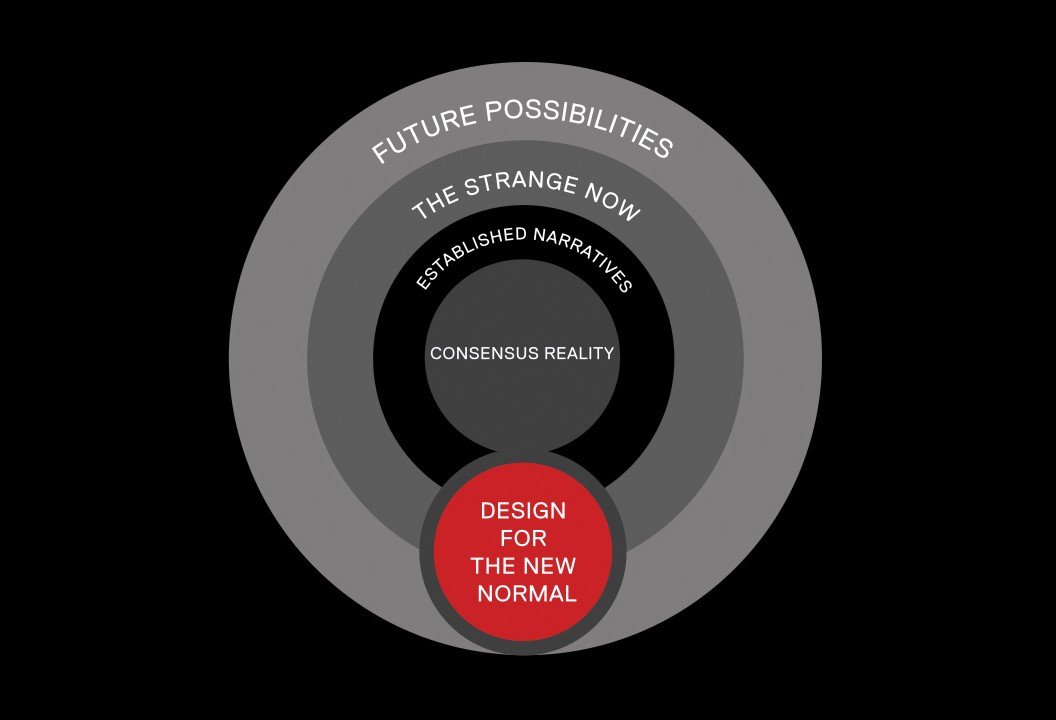Civil society in a digital world
More of life than ever is now lived through, monitored and enabled by data and digital technologies. What does this digital shift mean for civil society — and how could civil society be in a digital world?
This blog post introduces Glimmers, a collaborative research project led by Careful Industries and Plot.
Image via The Sofa Singers, showing a virtual choir singing together in April 2020 (Original by Beatrice Consolata on Instagram)
Firstly, an acknowledgement
This is a project about the near future. It can feel difficult to write or think about or acknowledge the future at the moment, because the present is so unknown and overwhelming. And it can also feel difficult, and dissonant, to find good things in the midst of a global pandemic. But amid the current uncertainty — which includes much pain, worry and sadness — there are glimmers of what will come next. This project hopes to capture some of those glimmers.
What is this work?
This is a research project about the new roles technology is creating for civil society. Throughout spring and summer 2020, we will be capturing some of the ways UK civil society is working with and responding to technology in order to spot some developing themes and possible futures. This is not a comprehensive mapping project, but an exercise in understanding emerging practice
By civil society we mean the formal and informal communities that make up the space between the market and the state, including charities and social enterprises.
Because of the coronavirus pandemic, we are still working out the best ways to work. If you think your practice reflects some of the themes discussed in this blog post, we would love to hear from you. Please fill out this short survey to tell us more.
Some context
We began thinking about this work before the sudden lurch to physical isolation created such a massive — and rapid — digital shift, but the need for this research had been clear for at least a couple of years.
Digital social infrastructure — where many of us conduct our most important relationships — has emerged organically throughout the 21st century: Google, Facebook, Amazon and many other businesses now power most of the do-it-yourself, self-organising bits of the web that bring people together in the ways community centres and street corners used to. The spread of these amenities and community platforms, which are mostly (but not all) free at the point of use, has seen the locus of many (but not all) communities shift away from the physical world to the digital world.
Before physical isolation kept so many of us at home, technology also made everyday life both more, and less, serendipitous: it allowed a person’s social footprint to grow much bigger than their immediate neighbourhood, but it also somehow re-tied the bonds of local communities in new ways. It is possible to have near neighbours you wouldn’t recognise in the street, but whose life you know all about from their posts on NextDoor. And for those who can afford the devices, bandwidth and subscriptions, connectivity to whole worlds — far away from one’s own postcode — is a luxury that has been available for two decades now.
Digital technologies allow us to be both more individualised and more connected, all at the same time, but much of that change has drifted unevenly into being and our social infrastructure is in a liminal state — caught between centuries. So the social glue that holds us together is sticking us differently now, for better and worse.
Some of the specific problems that the fast spread of new technologies have created are gaining more traction outside of technology circles: issues such as privacy and security, surveillance, AI ethics, misinformation, online child safety, and the gig economy. But this project pokes at something more diffuse — what support do we need in the ways we live now? How can civil society support more people in a world where technology both individualises and connects individuals, families, workers, learners and whole communities?
And of course, this strange and awful present has pre-empted many of those answers. Everyone with a smartphone in 2020 simultaneously has one foot in 1665 and another in 2030. And while civil society is often thought to lag behind other sectors in its use of technology, it has adapted with speed and ingenuity to the challenges created by lockdown (see, for instance, the rapid digital transformation experienced by We Are With You or DevicesDotNow, the campaign distributing connected devices to the digitally excluded). But this research is not about the challenge of civil society being digital, it’s about how civil society could be in a digital world.
Beyond the Strange Now
The “Strange Now” — term and image from Anab Jain/Superflux , Design for the New Normal (2013)
There is not much certainty about the reality of life after lockdown, but there will be new challenges to face. Economists agree there will be a recession (some predict a depression). Meanwhile the health and social impacts of lockdown will unfold across different parts of society for years to come, and we will all collectively and separately learn how to come to terms with the emotional and physical reality of the loss of tens of thousands of people. It will be a time of immense practical change and emotional uncertainty.
Civil society will be a vital part of building resilience through this upheaval. Professors Samuel Bowles and Wendy Carlin have proposed that, as we approach recovery, the economy will be shaped as much by “social norms and … institutions that are neither governments nor markets — like families, relationships within firms, and community organisations”, and they cite civil society as a source of “reciprocity, altruism, fairness, sustainability, identity”. Staying at home to protect one another from Coronavirus, setting up Mutual Aid groups, and risking one’s own health as a key worker are — in different ways, and with different levels of risk — great acts of communal care. It is too early to say if, and how, these acts of togetherness will permeate the ways we behave in the future, but there is certainly an opportunity for civil society to hold and maintain a bigger space for reciprocity, altruism and fairness.
Many of our strongest social bonds are currently being formed and deepened through digital means — via playdates, singalongs, religious services and Friday night discos on Zoom; by communities of strangers meeting to take care of each other on WhatsApp; by the shared endorphin rush of hundreds of thousands of children leaping around to Joe Wicks on YouTube; the fundraisers running on Facebook and GoFundMe; and the last goodbyes said via FaceTime. How we are online and how we are in real life are edging ever closer together in this time.
These fast rates of adoption, and the ways communities have bent technologies to meet their needs, are also a chance to repurpose and redirect some aspects of our digital future. Zoom has already responded to its new role as a community centre with better privacy features; what else could these pivotal moments change?
The big digital shift of the last month or so has had a forcing function, projecting many of us into a futuristic existence — more familiar from JG Ballard stories and Gartner hype cycle decks than any shared social norms.
BBT University Avatar Graduation Ceremony (2020), via @zGuz on Twitter
When we get, collectively, to next, some of these online behaviours will stick, and others will fall away. This research aims to spot some of the second-order consequences of these changes: what care, support, infrastructure and organisations will be needed as we settle into a more digital future?
Future glimmers
It might take years to get back to what we thought of as “normal” before (if we ever do), and — in a world filled with more physical distance — digital technologies will have a more vital role than ever in providing shared experiences, contact and community. Public gatherings will be different as we recover from the shock of physical distancing; not only will public health officials need to guide us back to spending time together in real life, but for many people the perceived (and real) risks of physical proximity will linger for some time.
And it is possible to bring some intention to building that near future: to sift the good and the useful from the clunky, unjust and unhelpful. Technology writer Joanne McNeil wrote two weeks ago (almost a century in pandemic time):
“For the time being and better than nothing at all” is a beautiful way to express the compromises many of us are making right now. What will we choose to put away from this time, and what will we take forward? And what is needed to make positive change possible in the future, not simply an acceptance that new norms will overtake us?
Sensing in a digital world
Lastly, it’s important to note that, although the ways data and technologies have changed and moulded society over the last two decades have been transformational and created great opportunities, they have also deepened existing inequalities and brought with them new social challenges.
Negative outcomes tend to hide in the shadows, and the sensing function of civil society is vital to shine a light on these. Technological change produces winners and losers, and critiques of that change should not always be characterised as old-fashioned or luddite; forward movement needs a counterbalance, a weight in the present and the past.
The roll-out of cashless payments, for instance, is fraught with such tensions, and without acknowledging them, protections cannot be put in place to take care of those who might be left behind, or to limit the velocity of change.
Meanwhile, the information collected and understood by civil society is often not translated into the kinds of “data” that are used to power big technology projects. The intelligence of frontline workers — for instance — is not captured in ways that easily fill data stores or inform algorithms.
Through this research, I hope we can articulate what that sensing function looks like in a digital world, and unpack the role it could have in the UK’s future innovation landscape.
If you are noticing the pros and cons of this digital shift unfold in your work and have a little time available to contribute to our research (10 minutes will do!), please do add your details to this survey.




